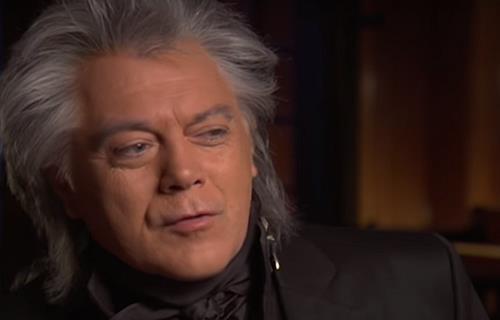
I’ve always been a fan of country music. Not the current genre of "bro country," but the classic country music that was popular between 1930 – 1970. When I heard that documentarian Ken Burns was planning on bringing his prodigious talents to documenting the history of country music, I was excited. A frequent visitor to Rowan University where I teach, Mr. Burns mentioned this was one of his upcoming topics. I’ve been waiting in anticipation for this for over five years. Now the wait is over.
Starting September 15, PBS stations around the country will be airing the 16-½ hour series. The scope of his survey begins with the various origin stories of country music including its African and Scotts-Irish roots. Along the way, he introduces you to most of its major stars, including interviews with many who have since passed away.
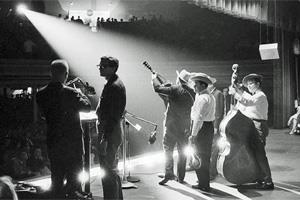 Stylistically, there is nothing unexpected here. The method he uses to tell these stories has worked remarkably well for Civil War, Jazz, and Baseball. With Country Music, Mr. Burns combines archival photos and films, music, and testimonials from both country musicians and historians who provide the breadth of context necessary to tell a story with such historic scope. That combination and the attention to detail are what makes Country Music, the series, compelling viewing, even if you think you don’t like country music.
Stylistically, there is nothing unexpected here. The method he uses to tell these stories has worked remarkably well for Civil War, Jazz, and Baseball. With Country Music, Mr. Burns combines archival photos and films, music, and testimonials from both country musicians and historians who provide the breadth of context necessary to tell a story with such historic scope. That combination and the attention to detail are what makes Country Music, the series, compelling viewing, even if you think you don’t like country music.
Mr. Burns always manages to find powerful storytellers for his series. I am reminded of historian Shelby Foote as one of the outstanding personalities who emerged from his Civil War documentary, originally broadcast in 1990. In Country Music, I particularly enjoyed Marty Stuart (top). Stuart, a musical Zelig who as a fourteen-year old played with Lester Flatt, is one of the dominant musicians to appear throughout the series. As both a musician and country music philosopher, Stuart is the perfect tour guide through the almost 100 years of its recorded history.
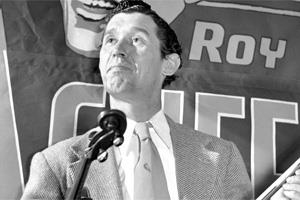 And there are other standouts. Bill Malone, author and professor, provides invaluable context. Ray Benson, leader of the band Asleep at the Wheel, discusses meeting Bob Wills and his Texas Playboys. And Brenda Lee, who as a young teenager toured with Patsy Cline, provides some wonderful stories about growing up while playing gigs with Cline, Mel Tillis, and Gene Vincent. Merle Haggard also relates his story about seeing Johnny Cash perform while Haggard was an inmate at San Quentin, a recording of which was a hit for Cash. Haggard passed away in 2016, so it is a blessing to have the time to visit with him again.
And there are other standouts. Bill Malone, author and professor, provides invaluable context. Ray Benson, leader of the band Asleep at the Wheel, discusses meeting Bob Wills and his Texas Playboys. And Brenda Lee, who as a young teenager toured with Patsy Cline, provides some wonderful stories about growing up while playing gigs with Cline, Mel Tillis, and Gene Vincent. Merle Haggard also relates his story about seeing Johnny Cash perform while Haggard was an inmate at San Quentin, a recording of which was a hit for Cash. Haggard passed away in 2016, so it is a blessing to have the time to visit with him again.
In addition to the artists, attention is also given to the songs, starting with The Carter Family and "Can the Circle be Unbroken" through to the music of the Hillbilly Shakespeare, Hank Williams. In particular, one episode ends with a focus on two different iconic songs. Merle Haggard tells the story of hearing Townes Van Zandt’s "Poncho and Lefty" for the first time from an Emmylou Harris album. And producer Billy Sherrill recounts George Jones telling him, after finishing the recording of "He Stopped Loving Her Today," "no one will buy this morbid son of a bitch."
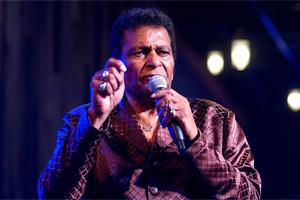 What makes Ken Burns' documentaries extraordinary viewing is the attention to detail. Country Music is no different. If someone is talking about a particular song, you can bet that song is playing in the background. Stories about particular artists are illustrated with fascinating photos. In one instance, Mr. Burns and his team discovered unreleased home movies of Johnny Cash with his first wife. And at the beginning of Episode 7, the musician and songwriter Bill Anderson tells the story of the opening of the brand new Grand Ole Opry. As he recounts the story of how they projected a film of Roy Acuff (above) singing "Wabash Cannonball" from the 1940s, the screen was lifted, revealing Roy Acuff singing live. Film from that opening appropriately illustrated his story.
What makes Ken Burns' documentaries extraordinary viewing is the attention to detail. Country Music is no different. If someone is talking about a particular song, you can bet that song is playing in the background. Stories about particular artists are illustrated with fascinating photos. In one instance, Mr. Burns and his team discovered unreleased home movies of Johnny Cash with his first wife. And at the beginning of Episode 7, the musician and songwriter Bill Anderson tells the story of the opening of the brand new Grand Ole Opry. As he recounts the story of how they projected a film of Roy Acuff (above) singing "Wabash Cannonball" from the 1940s, the screen was lifted, revealing Roy Acuff singing live. Film from that opening appropriately illustrated his story.
One theme that emerges from many Ken Burns films is race. Most of the major performers throughout the history of country music are white. Mr. Burns is careful to include the stories of the unsung African-American musicians who provided the inspiration for many country stars. Also included are the stories of DeFord Bailey, who was the first African-American musician on the Grand Ole Opry, and Charley Pride (above), the first to win a Grammy Award. Mr. Burns is also careful to include the stories of the many women artists, Kitty Wells, Loretta Lynn, Brenda Lee, Patsy Cline, Dolly Parton (below), and Emmylou Harris.
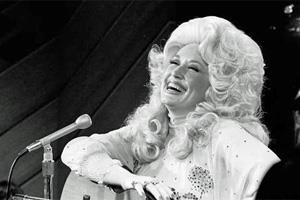 Even with 16-½ hours, there are winners and losers. Though exhaustive in scope, there’s still not enough time to cover many of the musicians who popularized country music. Hank Thompson, Webb Pierce, Jim Reeves, Hank Snow, and Ray Price are barely mentioned. And while these artists didn’t receive in-depth treatment, the documentary series does tell the stories of significant country musicians up till the mid-90s, and the introduction of Garth Brooks. This has been a point of contention with critics, but Mr. Burns has stated many times that it’s difficult to assess the significance of artists recording in the recent past.
Even with 16-½ hours, there are winners and losers. Though exhaustive in scope, there’s still not enough time to cover many of the musicians who popularized country music. Hank Thompson, Webb Pierce, Jim Reeves, Hank Snow, and Ray Price are barely mentioned. And while these artists didn’t receive in-depth treatment, the documentary series does tell the stories of significant country musicians up till the mid-90s, and the introduction of Garth Brooks. This has been a point of contention with critics, but Mr. Burns has stated many times that it’s difficult to assess the significance of artists recording in the recent past.
Mr. Burns has said that Country Music is his most accomplished work. Although biased towards the subject, I would agree. While many people will bristle at the slow pace of his storytelling or his choice of subjects to feature, this documentary and indeed the body of his work should be celebrated. We have never had a documentarian of this skill and talent for storytelling. I will always anticipate any new work by Ken Burns.
--
Keith Brand is the Chair of the Radio Television and Film Department at Rowan University and has been a banjo player for over 40 years.